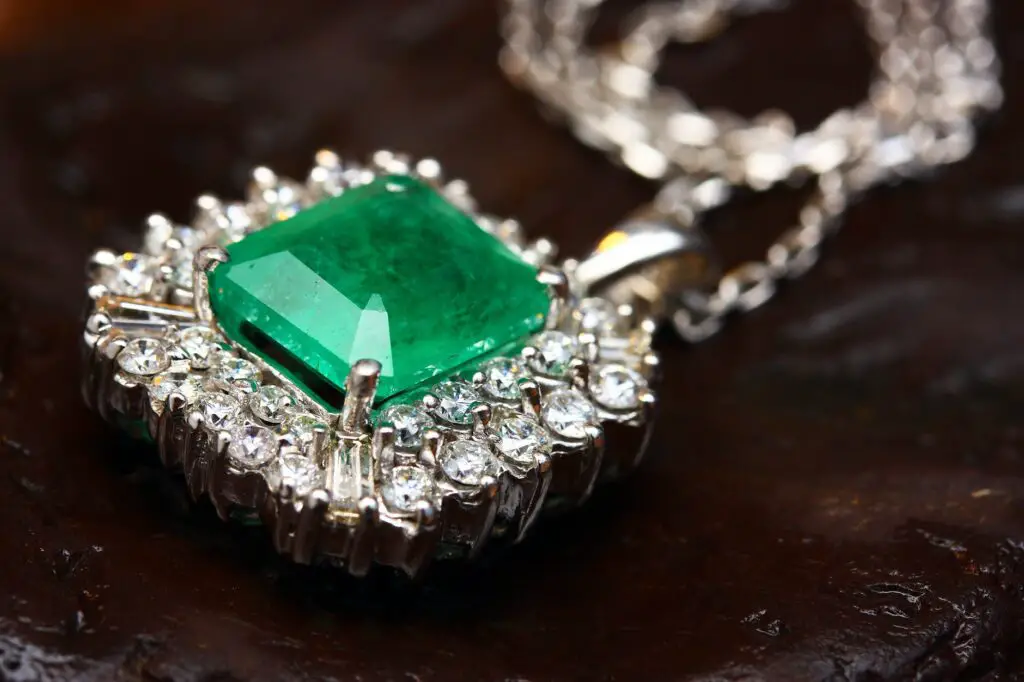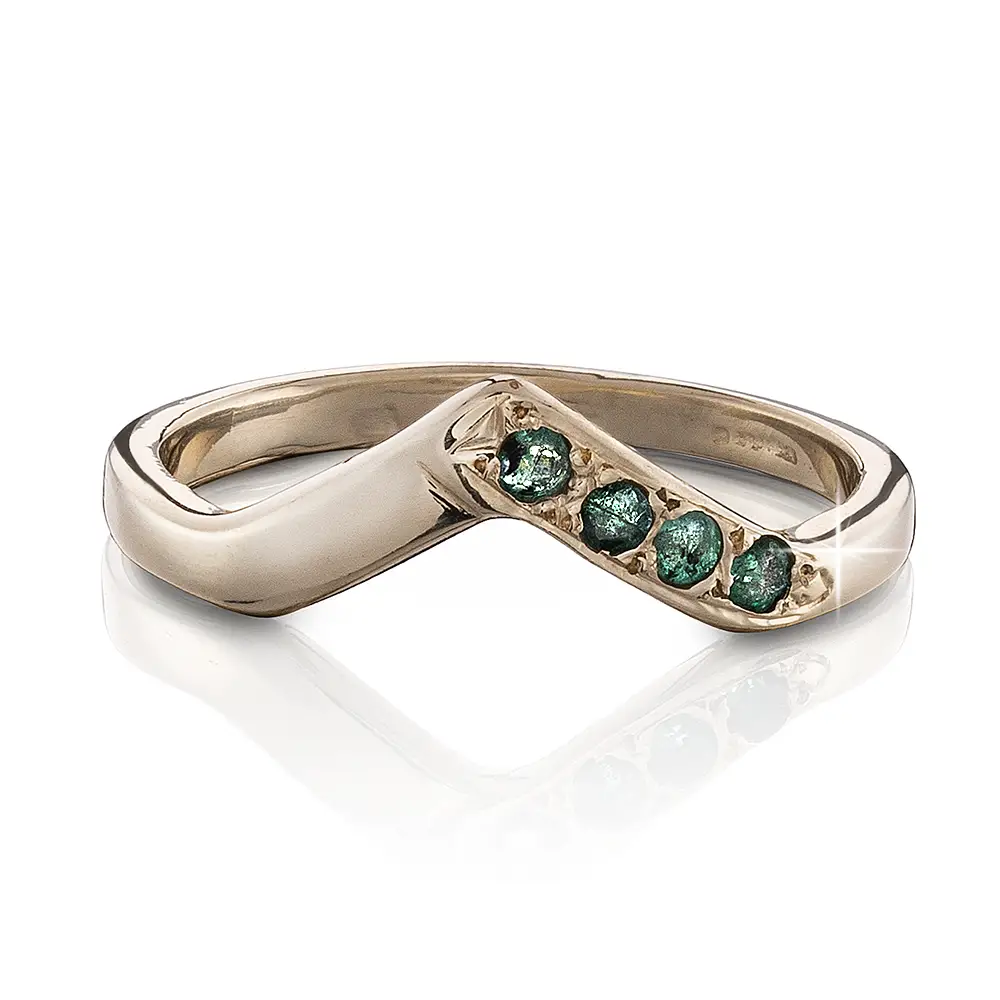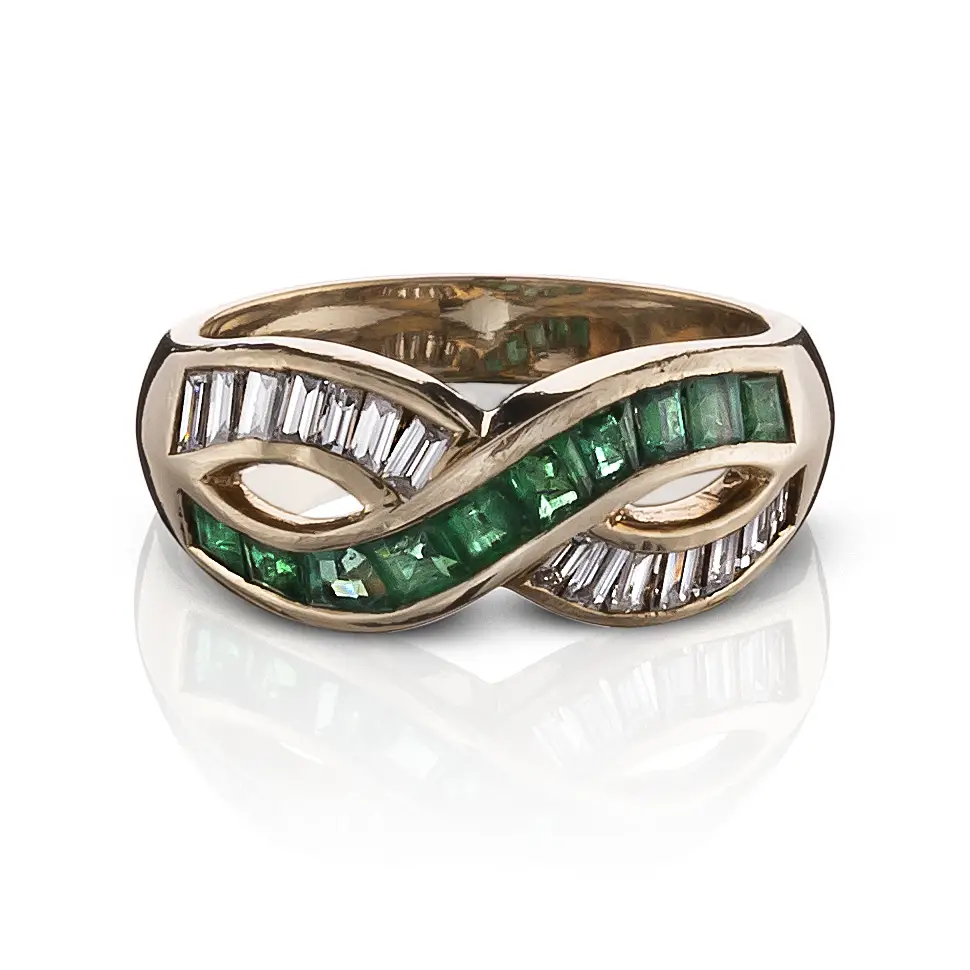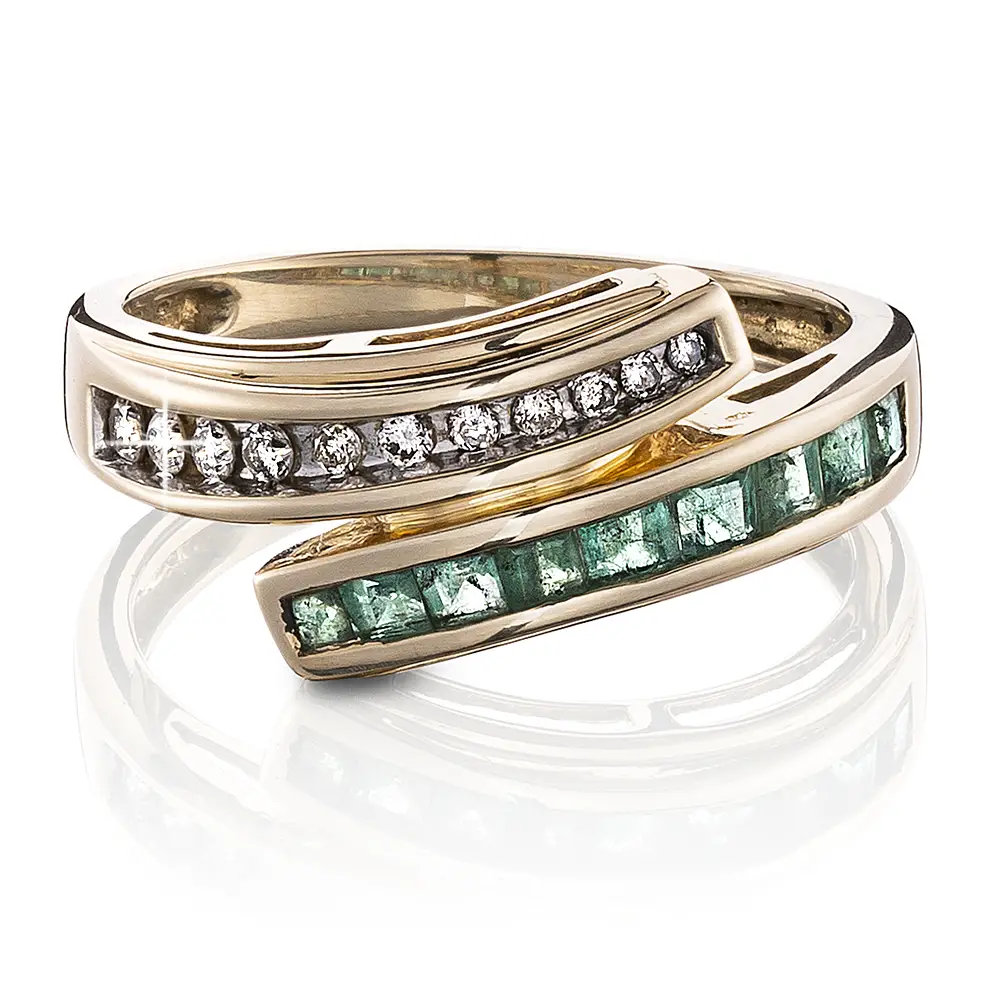Inclusions are an important part of emeralds.
They are what determine a stone’s value and should never be overlooked.
When you are shopping for emeralds, it is important to be able to distinguish between real and imitation stones.
One way to do this is by examining the inclusions in the stone.
Inclusions are tiny particles that are trapped inside the gemstone. If your emerald has inclusions, it is more likely to be genuine.
However, not all inclusions are considered good to have.
Some inclusions may suggest that a gemstone has been treated to enhance color or clarity which can devalue the gem.
It is important that when you are in the market for buying an emerald, that you know what to look for when you are viewing the stone.
In this blog post, we will discuss each of these inclusions in more detail.
Table of Contents
What Are Inclusions and Why Should They Be Examined?
As we mentioned before, inclusions are tiny particles that are trapped inside the gemstone. Most emeralds will have some type of inclusion. In fact, it is very rare to find an emerald without any inclusions.
Inclusions can be anything from other minerals, to fractures, or even bubbles of gas.
They can be found on the surface of the emerald or they can be trapped deep inside the stone.
- Inclusions in emeralds are important because they can tell us a lot about a gemstone. For example, inclusions can help us to determine if an emerald is real or fake. Inclusions can also tell us about the quality of the emerald and how it was formed.
- Inclusions can be used to determine the value of a gemstone. Gemstones with few inclusions are more valuable than those with many inclusions. In general, the fewer inclusions a gemstone has, the higher its quality will be.
Types of Emerald Inclusions
Now that we know what inclusions are and why they should be examined, let’s take a look at common inclusions emeralds should have.
| Inclusion Type | Description |
|---|---|
| Fissures | Fissures are also called feathers and are very commonly seen in natural emeralds. They do not detract from the look of the gemstone unless there are a huge number of them. They look like lines or fractures within the stone. |
| Cavities and Chips | Cavities and chips are the outline of a crystal shape within the emerald. The crystal is not actually present, but has left a small cavity where it used to be within the stone. |
| Growth Tubes | Growth tubes are simply tubes that run parallel to one another within the structure of the emerald. |
| Spirals | These are twisting inclusions that form when drops of water get trapped during the formation of an emerald. |
| Fingerprints | Fingerprint shapes resemble the look of a fingerprint and are formed by liquid filled bubbles in the emerald during formation. |
| Color Zoning | When an emerald has uneven colors, this usually happens because inclusions can make portions of the emerald look white or transparent. Emeralds do have secondary colors such as blue and yellow even though they are primarily green. Cutters will try to cut an emerald to incorporate the green hue while leaving behind the other color zones. |
When Are Inclusions Problematic for an Emerald?
Sometimes, inclusions can be problematic for an emerald.
If an emerald has too many inclusions, it can not only affect the look of the gemstone, but it can also make it more susceptible to damage.
Inclusions can also be problematic if they are located too close to the surface of the emerald. If an inclusion is close to the surface, it is more likely to be damaged or broken when the emerald is being cut or polished.
Here are some inclusions that emeralds shouldn’t have:
Inclusions That Block Light Transmission
Emerald inclusions become problematic when they block light transmission.
The beauty of an emerald depends on showing off a deep green color that is not opaque or solid looking because this takes away depth.
When an emerald is being graded, it will be determined by “Type 1, Type 2, or Type 3” which means that inclusions are very few to many.
Most emeralds fall into Type 3 because of their structural make up during formation, but occasionally, a few will fall into Types 1 or 2.
These later types will dramatically boost the value of the gem in proportion to the size and color.
Type 3 emeralds are the most common jewelry grade unfortunately, because they are the most affordable.
Inclusions Close To The Surface
Emeralds that have great color can be ruined if inclusions are reaching close to the surface of the stone, because the stone is more prone to cracking at that point.
Anytime you see an emerald, make sure to look at it from an angle that will allow enough light on the table of the stone to see if there are any areas that might have cavities or chips or even spirals near to the top.
Inclusions That Affect Color
Color zoning can make what would have otherwise been a nice emerald appear to have poor color saturation, because the nice green is broken by other hues.
Sometimes there are attempts to even out the color by oiling an emerald with dye in the hopes of staining it to give it the appearance of a better color disbursement.
You will know if there is staining when you see dark lines of green inside the gem rather than the typical white feathers or other normal inclusions.
This stain will eventually wash out of the stone!
Treatments That Affect Inclusions in Emeralds
Natural emeralds can be treated in several ways to improve clarity imperfections.
These can permanently cause the gem to have a better color at the same time.
Unlike sapphires and rubies, emeralds are not heated to improve their color…they simply cannot take heat.
99% of emeralds do have at least one type of treatment to enhance appearance:
Oil Treatment
Because emeralds have fissures that are formed with the stone, an oil is added and is drawn into the cracks within the emerald to improve the appearance by minimizing the look of these fissures.
Sometimes a colorant or dye is even added in the case where the emerald is pale or if it has color zoning. While these oil treatments are not permanent, they can last for years if the emerald is not subject to a lot of wear or detergents.
Resin Treatment
Sometimes a polymer or resin is added as a fill to treat an emerald in the same fashion as with oiling. This is a foreign substance which is guaranteed to reduce the value of the gem.
If you ever see an emerald that is advertised as being “resin filled,” it means that the gem has been treated in this way and you should avoid it.
Wax Treatment
If an emerald has had a wax treatment to fill cracks within it, it can leave behind a yellowish telltale sign when viewed under a microscope.
This is another undesirable treatment, but is sometimes done to salvage otherwise undesirable gems.
Fracture Filling
The most common treatment that emeralds receive is called “fracture filling.” Because emeralds have so many fissures, it’s very difficult to find one without any fractures at all.
These fractures are filled with a foreign substance and then polished over to give the appearance of a flawless stone.
The problem with fracture filling is that it’s not a permanent treatment and over time, the fill can degrade and need to be replaced. When this happens, it’s very obvious to anyone who knows what they’re looking for.
Do Fake Emeralds Have Inclusions?
There used to be a time when synthetic emeralds were flawless and it was very easy to tell them apart from natural emeralds.
Now, however, most manufacturers of synthetic emeralds are able to add inclusions to their stones on purpose in order to make them look more like natural emeralds.
The problem is that many people don’t know this and they continue to buy fake emeralds that have been made to look like the real thing.
If you’re ever in doubt, the best thing to do is to take your emerald to a qualified gemologist who can properly examine it and tell you for sure whether or not it’s real.
Here are a 3 things to consider:
- Natural emeralds (as well as synthetic emeralds that are grown in labs) do have inclusions, whereas imitation emeralds do not. Because an emerald, whether grown for thousands of years inside the earth or grown in a lab in an accelerated process is formed as crystals, they will have inclusions and if they don’t, then this is a major tell that you have a fake emerald.
- Look at the color up in the light. If you have a real emerald, it will be of a green or blue-green hue. If instead, it has yellow or brown undertones, it is most likely fake.
- Fire. Real emeralds show little to no fire. If you have a stone that looks like an emerald and it is sparkling and flashing light prisms everywhere, it is likely fake.
Final Thoughts
If you are in the market for an emerald, be sure to ask if the emerald has been treated with resin or wax, or if there is a colorant in the oil that is present in the emerald also.
If you cannot afford an emerald that has not had treatments that would devalue it, then consider a lab grown emerald.
Those are grown from the seeds of an earth grown emerald and will have far less inclusions because they will not be contaminated and subjected to some of the processes that the earth mined ones have.
When in doubt, always take your emerald to a qualified gemologist so they can give you their professional opinion.



